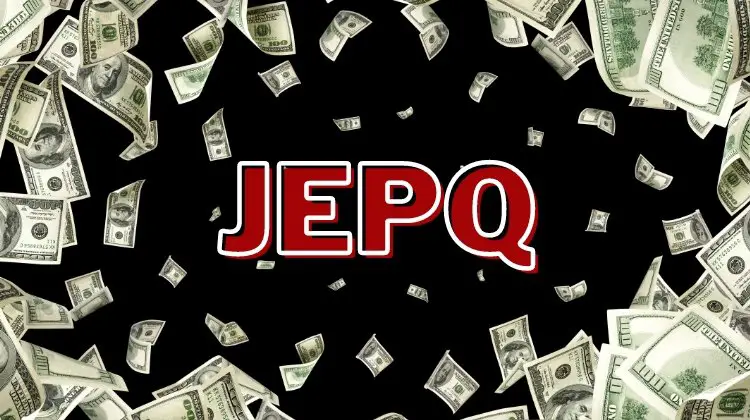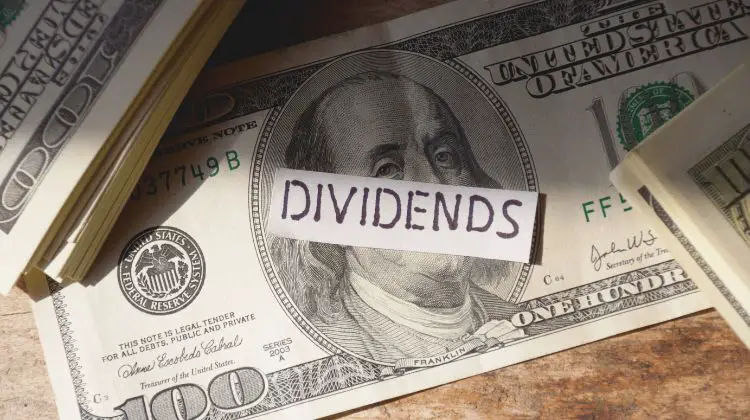
You put your money into a few different ETFs, feeling pretty smart about it. You picked a tech one, an S&P 500 one, and maybe even a total stock market fund. You think you’ve spread your risk out nicely, right?
But what if I told you that under the hood, you might own Apple stock three separate times? This is the sneaky problem of ETF overlap. You could be less diversified and taking on more risk than you realize, and it’s a common tripwire for so many investors.
You aren’t alone in facing potential fund overlap, a challenge that extends to mutual funds as well. Many people build a portfolio of funds thinking they are diversifying, but they are actually concentrating their risk. This guide will help you understand, identify, and fix this common issue.
Table of Contents:
- What Exactly is ETF Overlap?
- Why You Should Care About Hidden Overlap
- Common Examples of ETF Overlap
- How to Find Your ETF Overlap in 3 Simple Steps
- So You Have Overlap. Now What?
- Conclusion
What Exactly is ETF Overlap?
Think of an Exchange-Traded Fund, or ETF, as a basket holding dozens or even hundreds of individual stocks. It is a simple way to own a slice of many companies at once. You get instant diversification without having to buy each stock one by one.
ETF overlap happens when two or more ETFs you own hold the same stocks. A little bit of overlap is perfectly normal. After all, big companies like Microsoft and Amazon are in lots of different indexes, so you’ll find them in many different funds etfs.
But when that overlap gets big, it starts to cause problems you might not see coming. It’s like ordering a pepperoni pizza and a “meat lover’s” pizza. You think you are getting variety, but you end up with a double dose of pepperoni you weren’t expecting.
Why You Should Care About Hidden Overlap
You might be thinking, “So what if I own Apple twice? It is a great company.” While that may be true, significant overlap can quietly mess with your investment plan. It creates blind spots in your portfolio that can hurt your long-term growth.
This is about more than just owning the same stock multiple times. It is about how that duplication affects your overall financial picture. Understanding this is a huge step in becoming a more confident investor and making informed decisions.
The Illusion of Diversification
The main reason we buy ETFs is for diversification. We are spreading risk across many stocks and sectors so if one area tanks, our whole portfolio doesn’t go down with it. It’s the classic advice: don’t put all your eggs in one basket.
But with high ETF overlap, you are doing just that. You just have your eggs spread across different-looking baskets that are all being carried in the same cart. This creates a risk portfolio that is more fragile than it appears, especially during periods of market volatility.
If your tech-heavy overlapping ETFs all plummet, your portfolio will take a much bigger hit than you anticipated because you were secretly concentrated in that one area. You lose the safety net that a properly diversified portfolio is supposed to give you. A 2018 Morningstar analysis found that many investors believe they are more diversified than they actually are, a false sense of security that is one of the biggest dangers of unchecked overlap.
Unintended Sector Bets
Let’s say you own both VOO, which tracks the S&P 500, and QQQ, which tracks the tech-heavy Nasdaq-100 index. You feel good because you have exposure to the broad market and the exciting tech sector. But look closer.
The S&P 500 is already heavily weighted with giant tech companies like Microsoft Corporation, Apple, and NVIDIA Corporation. So by holding both funds, you are not just adding tech, you are doubling down on it. Your portfolio might be more than 40% invested in technology, even if that wasn’t your plan, with heavy exposure to companies like Microsoft, Meta, and Tesla.
This isn’t necessarily bad if you are intentionally bullish on tech. The problem is when it’s unintentional. You’ve made a huge bet on one sector of the economy, including stocks like Eli Lilly and Costco Wholesale Corporation, without even realizing it.
Paying Fees for the Same Stocks
Every ETF comes with an annual fee called an expense ratio. It’s a small percentage of your investment that goes to the fund manager. These fees might seem tiny, but they add up over decades of investing.
If you own the same group of stocks through three different ETFs, you are paying three separate management fees for the exact same investment exposure. It’s like paying for three gym memberships just to use the same treadmill. Why would you do that?
Reducing these duplicate fees, even if they’re small, can add thousands of dollars to your retirement nest egg over time. It is one of the easiest wins you can get as an investor. Comparing fees and holdings is a cornerstone of smarter investing.
Common Examples of ETF Overlap
Sometimes seeing is believing. Let’s look at some very popular ETFs that many people own. This is where the idea of overlap gets very real, very fast, and you can see how you might be over-exposed to a single company or sector.
The S&P 500 Crowd: VOO vs. IVV vs. SPY
These three ETFs are some of the biggest in the world. They all have the same goal: to track the performance of the S&P 500 index. If you own more than one of these, your overlap is almost total.
| Ticker | ETF Name | Top Holding | Overlap % with VOO |
|---|---|---|---|
| VOO | Vanguard S&P 500 ETF | Microsoft Corporation | 100% |
| IVV | iShares Core S&P 500 ETF | Microsoft Corporation | ~100% |
| SPY | SPDR S&P 500 ETF Trust | Microsoft | ~100% |
There’s really no good reason to own more than one of these. They hold the same 500 stocks in virtually the same proportions. The only practical difference between them is their expense ratio and legal structure as an ETF trust, so you can just pick one (usually the one with the lowest fee) and move on.
Tech-Heavy Titans: QQQ vs. VGT
Here’s a more subtle, but still important, example. Many people buy QQQ for its focus on the innovative companies in the Nasdaq and VGT for pure-play technology exposure. But there’s a huge crossover.
| Ticker | ETF Name | Overlap Percentage | Top 3 Overlapping Stocks |
|---|---|---|---|
| QQQ | Invesco QQQ Trust (Nasdaq-100) | ~45% | Microsoft, Apple, NVIDIA |
| VGT | Vanguard Information Technology ETF |
The Invesco QQQ, often found under the full name Invesco QQQ Trust, has significant overlap with VGT. With a nearly 45% overlap, holding both means a massive concentration in big-name tech, including Meta Platforms and Alphabet.
If your goal is to add more specific tech exposure that the QQQ Trust might miss, you have to be very careful. You might just be buying more of what you already own, including Meta Platforms and Apple.
Total Market vs. S&P 500: VTI vs. VOO
This is probably the most common overlap new investors create. VTI gives you the entire US total stock market, including small and mid-sized companies. VOO gives you the 500 largest US companies, including giants like Berkshire Hathaway.
They sound different, right? The catch is that the US stock market is dominated by those 500 large companies. They make up over 80% of the total stock market’s value.
As a result, the overlap between VTI and VOO is surprisingly high. This also includes top stocks like NVIDIA, Microsoft, and those from the costco wholesale business.
| Ticker | ETF Name | Overlap Percentage | Key Difference |
|---|---|---|---|
| VTI | Vanguard Total Stock Market ETF | ~85% | VTI includes thousands of small/mid-cap stocks |
| VOO | Vanguard S&P 500 ETF |
Holding both isn’t necessarily a mistake, as VTI gives you a bit more diversification into smaller companies. But it’s not efficient. You could achieve the same exposure more simply by just owning VTI, since it already contains all the stocks in VOO, from Berkshire to Nvidia.
How to Find Your ETF Overlap in 3 Simple Steps
Okay, enough theory. How do you actually check your own portfolio for this stuff? It’s easier than you think.
You don’t need a complicated spreadsheet or financial advisor to do it. You can get a clear picture in just a few minutes using free online investing tools. This simple check-up can give you incredible clarity about what you truly own.
Step 1: List Your ETFs
First, just get organized. Open a notebook or a blank document and write down the ticker symbols for every ETF and mutual fund you own in your investment accounts. This includes your 401(k), IRA, and any taxable brokerage accounts.
Don’t forget about any complex funds you own. For example, if you own a “Target Date 2060 Fund,” look up its holdings because you might be surprised to find it’s just a mix of other stock and bond ETFs.
Step 2: Use an ETF Overlap Checker
Now for the magic. There are free tools online, like ETFRC.com’s Fund Overlap tool, built for exactly this purpose. Many investors and some professionals from the ETF insider community use these to compare ETFs and analyze holdings.
One of the most popular is an overlap tool from the ETF Research Center. You just type in the ticker symbols from your list, for example, your total stock fund and your holding of SPY.
Enter two or more tickers into the comparison tool and hit the button. It will instantly analyze the holdings of each ETF. It then spits out a detailed report showing you exactly where the overlap is.
Step 3: Analyze the Results
The overlap tools will give you two key pieces of information. The first is a simple percentage from the ETF comparison. It will say something like, “These two funds have a 35% overlap by weight.” This number tells you what percentage of your portfolio is duplicated.
A low number, say under 15%, is generally not a huge concern. But if you see numbers like 40%, 60%, or even higher, it’s time to pay attention. This analysis helps you identify overlapping funds and make better investment decisions.
The tool will also show you a list of the exact stocks that overlap and the weighting of each one. This helps you see if your portfolio is too dependent on just a few big names. This is where you can spot your unintended bets on certain stocks or sectors.
So You Have Overlap. Now What?
Finding overlap in your portfolio isn’t a reason to panic. It is actually a great opportunity. It means you have spotted a weakness, and now you have the power to fix it and make your portfolio stronger.
The changes you make don’t have to be dramatic. Often, a few simple tweaks can drastically improve your diversification, reduce your fees, and better align your portfolio with your actual financial goals. The goal is to be deliberate when you manage etf holdings.
Decide Your Goal
Before you start buying or selling, ask yourself what you want to achieve. Is your main goal to simplify your portfolio? Are you focused on cutting down on investment fees? Or is your primary objective to reduce risk through true diversification across different asset classes?
Your answer will guide your next steps. For someone wanting simplicity, consolidation is the answer. For someone seeking real diversification, adding complementary assets is the way to go.
Consolidate Your Portfolio
The easiest fix is for redundant funds. If you own VOO, IVV, and SPY, you really only need one. Check their expense ratios—which you can find on sites like Morningstar—and consolidate into the cheapest one.
The same logic applies if you own an S&P 500 fund and a “large-cap growth” fund with 70% overlap. You could sell one and just stick with the fund that best represents your core strategy.
This simplifies your holdings and cuts down on redundant fees. Taking this action is a key part of building a stronger financial future.
Find Complementary ETFs
This is where you can really improve your portfolio’s resilience. Instead of buying another ETF that’s similar to what you have, look for funds that are intentionally different. These are funds with low overlap with your core holdings.
If your portfolio is built around an S&P 500 fund like VOO, consider adding ETFs that give you exposure to other areas. This is how you can effectively build a portfolio that can weather different economic conditions. Exploring these areas is a critical step.
Consider these complementary asset classes:
- International Stock: Your US-focused fund misses out on growth from the rest of the world. Adding a broad international stock fund (ex: VEA, IEFA) gives you exposure to developed economies in Europe and Asia.
- Emerging Markets: These are higher-risk but higher-growth potential economies. An emerging markets ETF (ex: VWO, IEMG) adds companies from countries like China, India, and Brazil.
- Real Estate: Investing in a real estate ETF (ex: VNQ) provides exposure to physical properties and can offer returns that do not move in lockstep with the stock market.
- Bond ETF: Bonds are crucial for stability. A broad bond ETF (ex: BND, AGG) can cushion your portfolio during stock market downturns. You might also consider a short-term bond fund for lower volatility.
- Inflation-Protected Securities: These government bonds (ex: TIP) are designed to protect your purchasing power when inflation rises, offering another layer of diversification.
- Alternative Funds: For more advanced investors, looking into areas like a money market fund for cash holdings or a specific income fund can further tailor a portfolio.
Adding these can give you genuine diversification. When one part of the market is down, another part might be up, smoothing out your returns over the long run.
A Quick Note on Taxes
One important point to remember. If you are investing in a taxable brokerage account (not an IRA or 401(k)), selling an ETF that has gone up in value can trigger a tax bill. This is known as a capital gains tax.
Before you sell off a large position to fix an overlap issue, it is smart to understand the potential tax consequences. It may impact your decision on how to proceed.
Sometimes it’s better to simply stop adding new money to the overlapping fund and direct future investments elsewhere. It might not fix the problem overnight, but it avoids a surprise tax hit.
Conclusion
Building a solid investment portfolio is like building a strong house. You need a solid foundation and a structure that can stand up to storms. Hidden ETF overlap can be like a crack in that foundation, silently weakening your entire financial structure without you even knowing it.
Taking a few minutes to check your portfolio for this issue is one of the most powerful moves you can make as an investor. It turns you from a passive participant into an active and informed captain of your own financial ship. Using an ETF comparison tool helps you take control.
By understanding and managing ETF overlap, you make sure that your investments are truly working for you. You will align your portfolio with your goals, reduce unnecessary risk, and continue building the future you want. Making these informed investment decisions is what successful long-term investing is all about.






